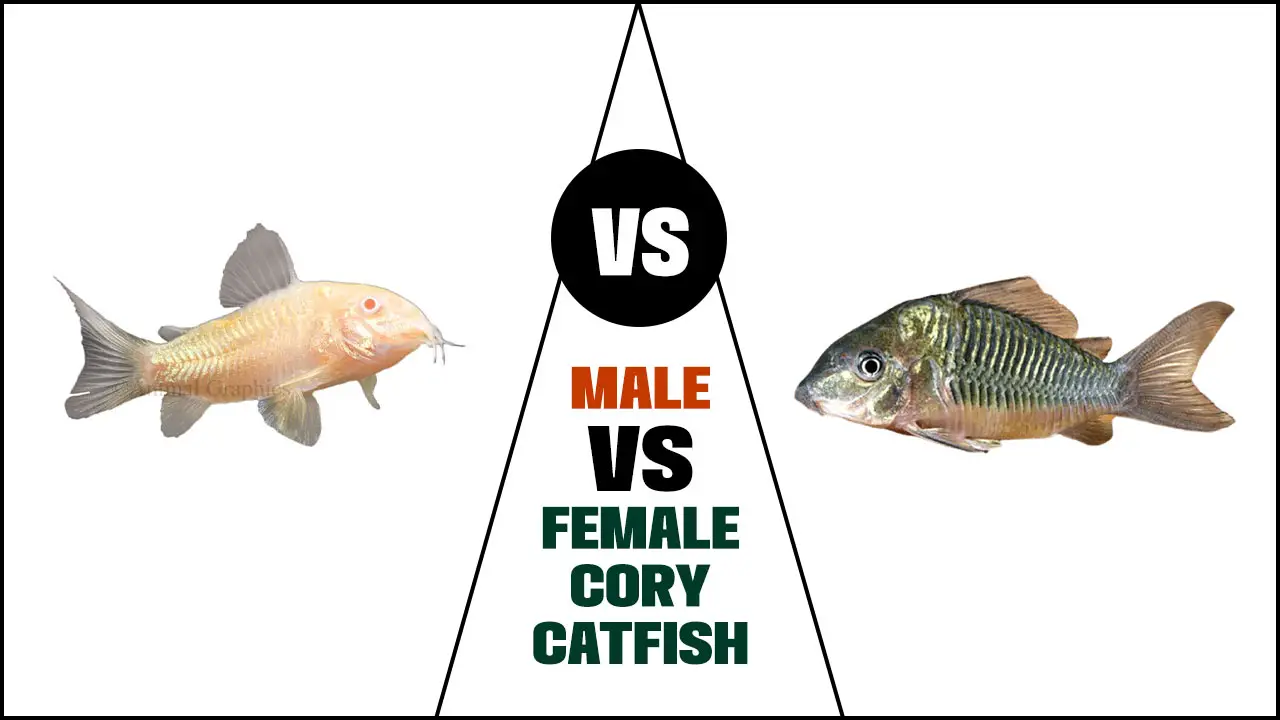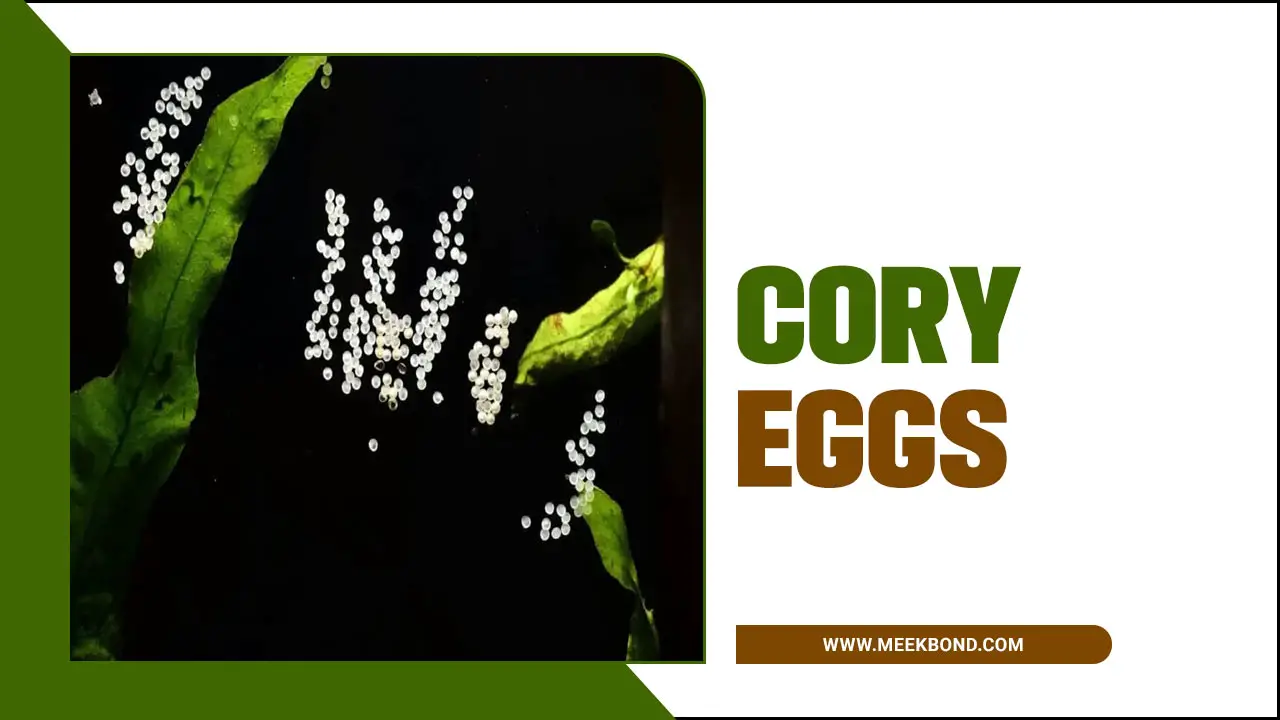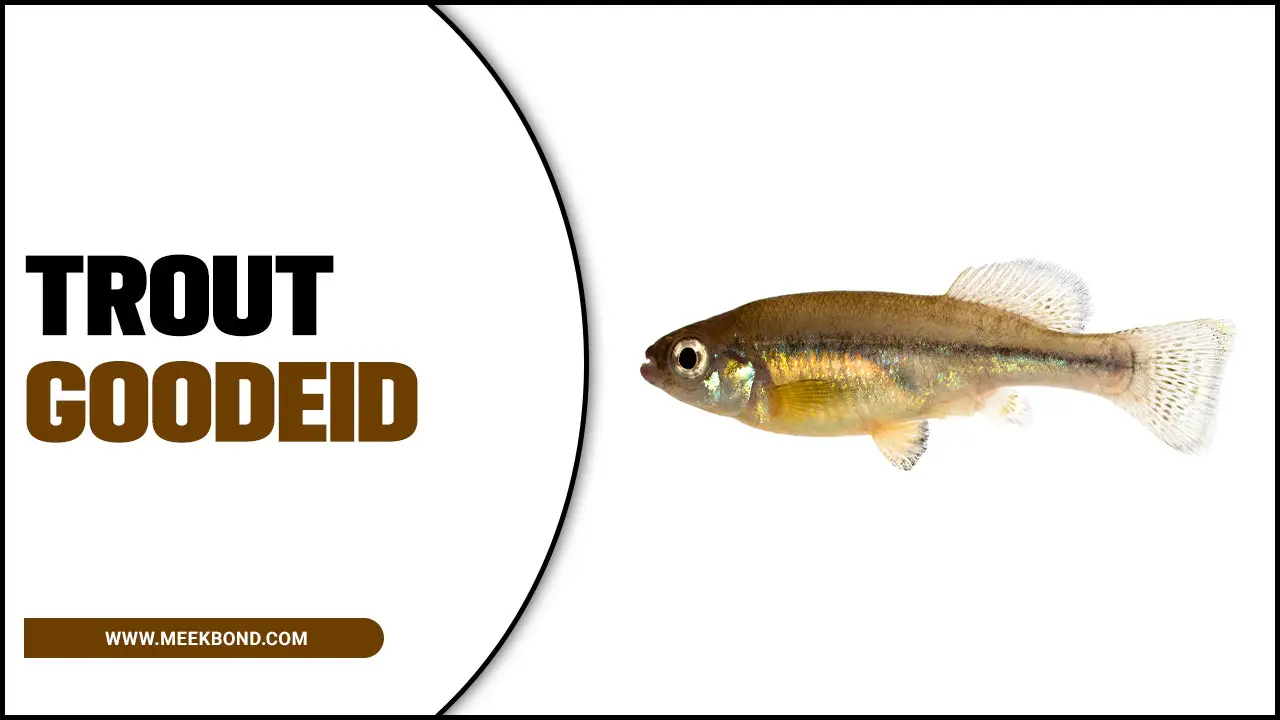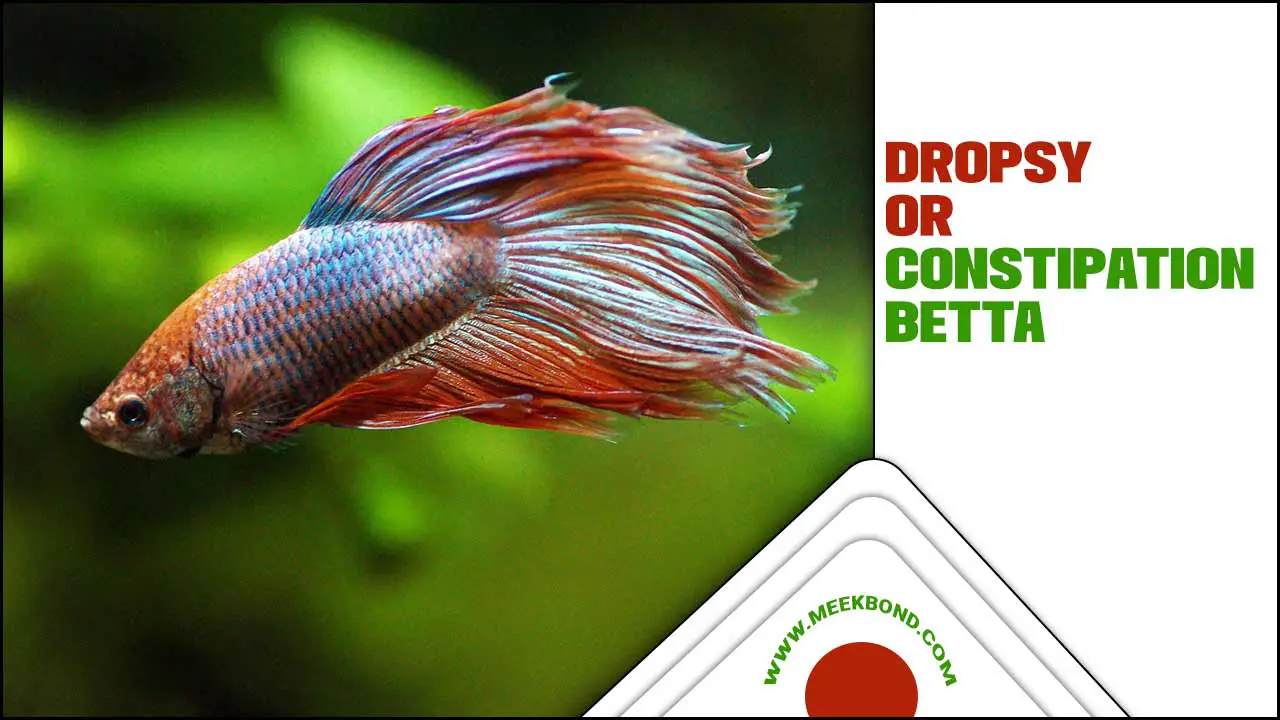Fish are a vital part of any aquarium and provide entertainment, food, and oxygen for the aquarium ecosystem. At the same time, fish can live on their food (worms, algae, etc.).
And the environment alone, they also require regular feeding to remain healthy. Most aquarium hobbyists feed their fish once daily or every few days to maintain the aquarium water quality. And ensure they get the necessary nutrients.
Transitioning your fish to a new food is the most important step in fish care. This is because the new food affects how long your fish lives, whether it gets sick, and its overall health. When transitioning fish from one type of food to another, several steps ensure the fish gets.
The most nutrition is possible while avoiding potential problems like intestinal irritation, diarrhoea, or nutritional deficiencies. We’ll cover how to transition your fish to a new type of food and the basics of feeding fish.
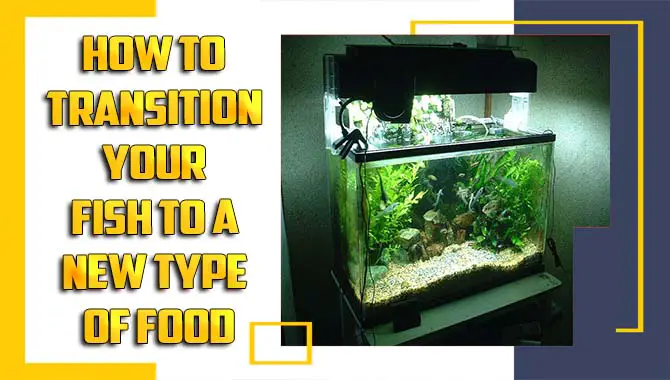
Exclusive Tips On How To Transition Your Fish To A New Type Of Food
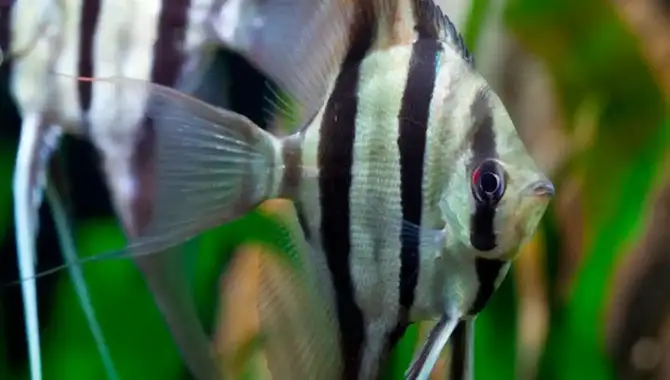
Changing your fish’s diet can be a difficult task, but with the right approach and some patience, you can ensure a smooth transition. Keep water quality in the tank clean and stable by monitoring water parameters regularly and following aquarium-safe guidelines when changing water levels or adding new aquarium items. Be patient with your fish adjusting to its new food. Here are some exclusive tips on how to transition your fish to a new type of food:
1. Gradual Introduction – A sudden change in diet can shock your fish and cause stress. It’s best to introduce the new food gradually and in small quantities. Start by offering a small amount of the new food alongside the old food. Over a period of 5-7 days slowly increase the amount of the new food and decrease the amount of the old food until the fish is only eating the new food.
2. Consistency – Stick to a consistent feeding schedule, this will help your fish adapt to the new food and create a routine. Feed your fish at the same time every day, and adjust the amount of food according to their appetite.
3. Quality of Food – Make sure that the new food you are introducing is of high quality and meets the nutritional needs of your fish. Research the type of fish you have and their dietary requirements before making any changes.
4. Variety – It’s essential to provide a varied diet for your fish to ensure they receive all the necessary nutrients. Try to include a variety of and their dietary requirements before making any changes. Consult with a veterinarian or a professional fish expert if you’re unsure about the type of food that would be best for your fish.
What To Do When Your Fish Isn’t Eating
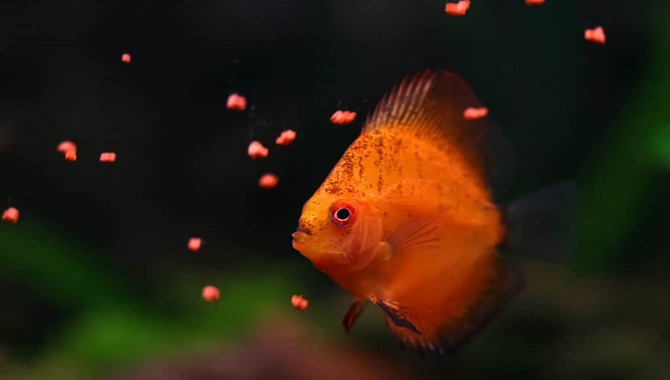
When your fish isn’t eating, there are a few things to check for and try to fix the problem. One of the main causes of not eating can be that your fish is being territorial, so you should ensure your aquarium is large enough for the fish to swim around freely without feeling threatened.
Another cause could be that the water temperature is too high or too low for the fish, so make sure it’s between 10-25 degrees Celsius. Also, ensure the water quality is good with frequent water changes and add aquarium salt if necessary. Other reasons for not eating could be food poisoning or a dietary issue such as the wrong type of food or too much food.
If all these steps don’t work, you can try different types of food such as algae, pellets, fruits, vegetables, or fish flakes. You can also try feeding your fish at different times of the day or after the lights have gone out. Finally, quarantine new fish for 4-8 weeks to prevent new diseases from spreading among the fish in the aquarium.
What Should You Do If Your Fish Seems To Need To Be Getting Along With The New Food?
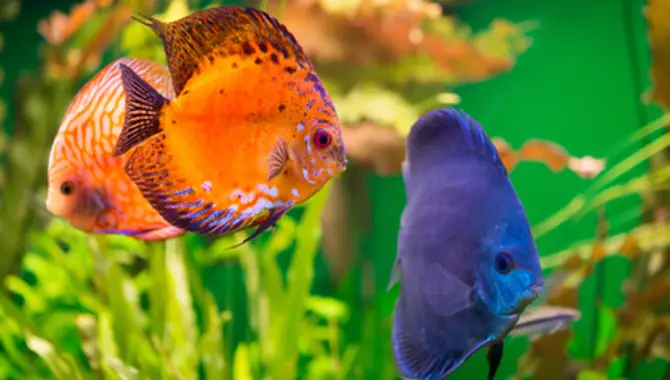
If your fish isn’t eating the new food you’ve chosen, you can do a few things to help it get used to the new food. First, try mixing a small amount of the new food with its current diet. If that doesn’t work, try switching its diet completely and see what happens.
Also, be sure to offer the new food in places where the fish is likely to see and eat it. You can also try varying the food’s brand, colour, or size to make it more interesting to your fish.
If none of these methods works, try a different type of food or mix in some algae or pellets as a treat. Like any other animal, if you provide your fish with nutritious and safe food, it will be more likely to accept its new diet with open arms.
Are There Any Side Effects Associated With Transitioning Your Fish To A New Type Of Food?
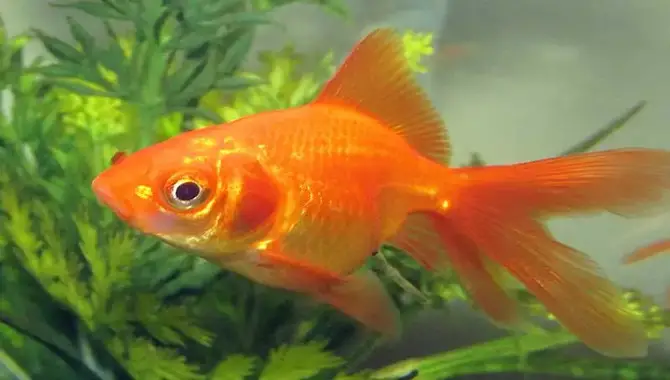
A few side effects are associated with transitioning your fish to a new type of food. Some of these include gasping, loose stools, and redness or irritation in the mouth. These side effects are usually temporary and subside after your fish adjusts to the new food.
If these issues persist or become severe, it is best to consult a veterinarian for assistance. Many types of fish are available for purchase, and it is up to you as the owner to decide what type suits your fish’s needs and environment.
The most important aspect when transitioning your fish to a new type of food is ensuring they have access to clean water and nutritious flakes or pellets. You must also watch their behaviour and water quality carefully, as any sudden changes in their environment can cause stress.
Things To Keep In Mind While Transitioning Your Fish To A New Food
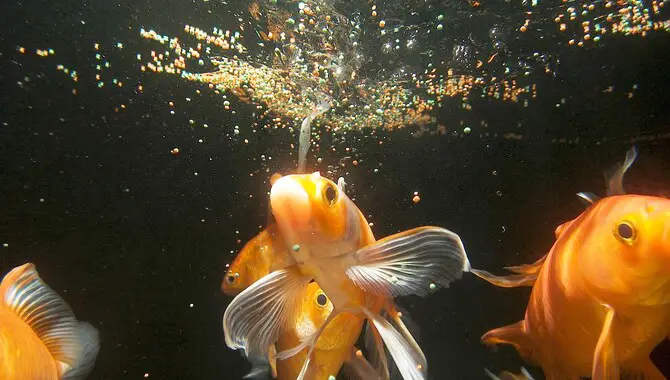
Regarding transitioning your fish to a new food, there are a few things to keep in mind. For example, make sure you give your fish a well-balanced diet consisting of protein and carbohydrates. If possible, buy frozen or freeze-dried foods instead of fresh ones. This helps reduce the risk of bacterial contamination and parasites in your fish’s diet.
Another thing to remember is the consistency of the food you provide your fish. Some frozen and freeze-dried foods can be too mushy or hard for your fish’s liking, so test them before feeding them.
Finally, consider where you will store the food you’re giving your fish once they’ve transitioned to it. If you leave the old food lying around, bacteria can start growing on it, which can cause all sorts of problems for your fish (like diseases and death).
Potential Problems When Transitioning Your Fish To A New Food
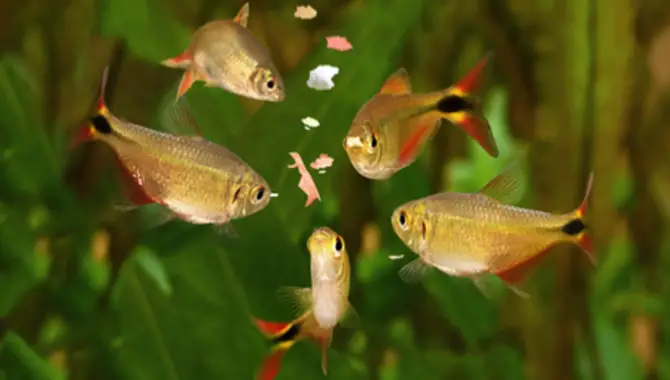
One of the most common issues when transitioning your fish to a new type of food is the loss of appetite. This can be caused by several factors, including the change in the diet itself and other stressors in the aquarium.
If this happens, consider supplementing with various frozen and live foods to entice your fish back into eating. If your fish has lost its appetite, it might be due to other factors, such as disease or too many nutrients in its diet. It could also be a sign of poor water quality or overstocking.
To fix this issue, consider checking the parameters in your tank (such as pH level and hardness) and making any necessary changes if needed. You can also supplement with specific foods, such as spirulina or brine shrimp, to stimulate your appetite. Another option is adding an algae wafer to the tank, providing them with a protein source they prefer to eat.
However, if these measures fail to get your fish eating again, in that case, it’s best to consult with a qualified professional regarding options such as medications or dietary adjustments that can help restore its health and well-being.
What Are Some Of The Things You Need To Do During The Transition Process?
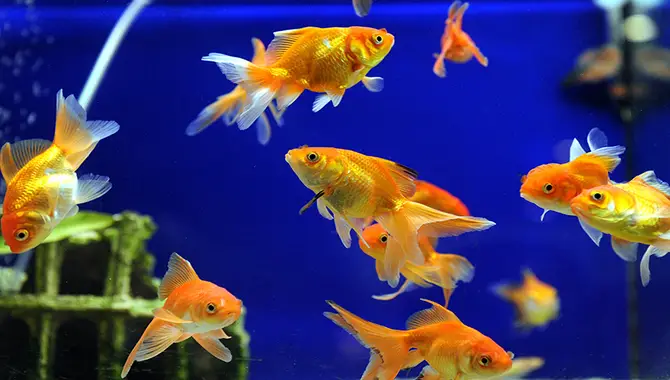
First, you must choose the new food carefully. You should ensure it is nutritious and has adequate essential vitamins and minerals. You must also check the ingredient list for any possible allergens.
Once you have chosen the new food, you must feed it to your fish in a way similar to how you would feed them the old food. This means you should keep the amount of food or change the diet the same. If they refuse the new food, try again in a few days or weeks, and be patient if they still need to eat the new food. It may take some time for them to get used to the new diet.
If your fish are eating well on their current diet, then there is no need to panic if they suddenly stop eating a few days after changing their diet. They may be just getting used to the new one and will continue to eat as usual once they are comfortable with their new diet.
However, if your fish are not eating or appear unwell, it is important to take action sooner rather than later. The health of your fish depends on how well they receive nutrients from their current diet. It is important to check their water regularly and treat any issues before they become serious.
Why it’s important to transition fish to a new type of food slowly
When transitioning your fish to a new type of food, it is important to do so slowly and gradually. Fish have sensitive digestive systems, and a sudden change in their diet can cause stress and even illness. Introducing the new food gradually over several days or weeks gives your fish’s digestive system time to adjust and adapt to the new nutrients.
This can help prevent digestive issues such as bloating or constipation, which can harm your fish’s health. A slow transition can also help your fish become more receptive to the new food, as they have time to get used to the taste and texture. So if you plan on switching up your fish’s diet. Take it slow and give them plenty of time to adjust.
Common mistakes to avoid when transitioning fish to a new type of food
Transitioning fish to a new type of food can be a delicate process, and several common mistakes should be avoided. One mistake is switching the fish’s diet too quickly, which can cause digestive problems and stress. It’s important to gradually introduce the new food over a period of several weeks, mixing it with the old food until the fish are used to it.
Another mistake is not researching the nutritional requirements of the fish and selecting a food that does not provide them with adequate nutrients. It’s also important to consider the texture and size of the new food, as some fish may have difficulty adjusting to certain textures or struggle with larger pieces of food.
By avoiding these common mistakes and taking a slow and careful approach to transitioning your fish to a new type of food. You can help ensure their long-term health and happiness.
Conclusion
As fish owners, transitioning from one food to another is inevitable. However, it is essential to ensure that the new food is of the same quality and quantity as the old one. A fish owner can consult a pet store for help or seek advice from another knowledgeable individual. With the above inputs, it should be easier for fish owners to transition their fish to a new food.
Remember that feeding your fish the correct type of food is crucial for its overall health and well-being. Fish require varied diets for optimum health and growth.
The key is to provide them with a balanced diet of high-quality food and ensure optimal water quality. We’ve discussed how to transition your fish to a new type of food. However, if your fish isn’t eating or appears unhappy with the new food, you should consult a pet store professional for help.
Frequently Asked Questions
How Do You Introduce New Food To Fish?
It’s important to gradually introduce new fish to an already established aquarium. Make sure to transfer fish to a new home gradually as well. Start with hardy fish that can cope with the waste levels in the new aquarium. Feed sparingly once or twice daily and remove any uneaten food after 5 minutes. Monitor water quality to make sure it is suitable for the new fish.
Can You Change A Fish’s Food?
Yes, you can change your fish’s food. Feeding your fish a variety of different foods can help to provide essential nutrients for their health.
Different types of food can be offered to your fish, such as vegetables, algae, and live food. It is important to watch your fish when changing their food to ensure they are eating and adapting to the new food.
Do Fish Get Bored Of The Same Food?
Yes, fish can become accustomed to the same food and may reject new types of food. To prevent this from happening, it is important to provide a variety of food to your fish. You can do this by mixing the new food with old food or fasting your fish for 2-7 days.
This will help whet their appetite, making them more willing to try something new. If fish eat something other than frozen foods, try training them to eat other foods. You can offer them small pieces of new food several times daily.
When Should You Replace Fish Food?
It is important to replace fish food every 3-6 months. This will help to prevent your aquarium from becoming overstocked and unhealthy. When it comes to fish food, the key is to replace it if it is expired or no longer looks or smells fresh.
Fish food should also be replaced if the fish are no longer eating it or are not getting the proper nutrition. Lastly, when fish are in quarantine. It is advised to replace their food with a new type when they are released into the main tank.
Why Do I Need To Acclimate Fish?
Acclimating fish to new water conditions helps them adapt to the new environment. You can do this by gradually introducing them over 1-2 days. It is important to monitor your fish during this time and make any necessary adjustments if they show signs of stress or tank overcrowding. To ensure the new fish adjusts to their new environment safely and successfully.

Aquarium passion is all about connecting with the aquatic life and providing education to the public on the importance of these creatures. We showcase a wide variety of marine life through our exhibits as well as working with schools to provide unique learning opportunities for students of all ages.

